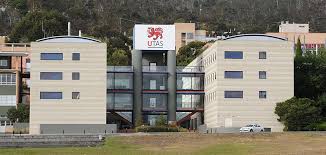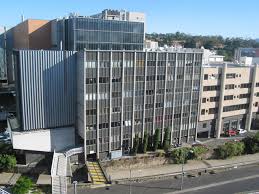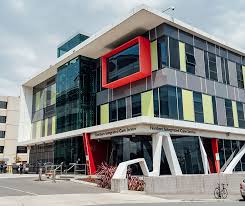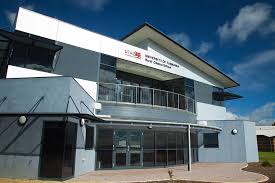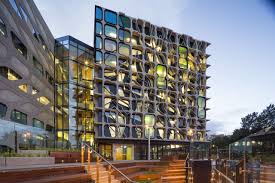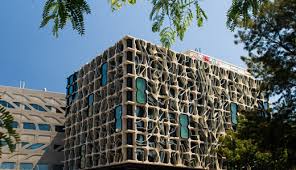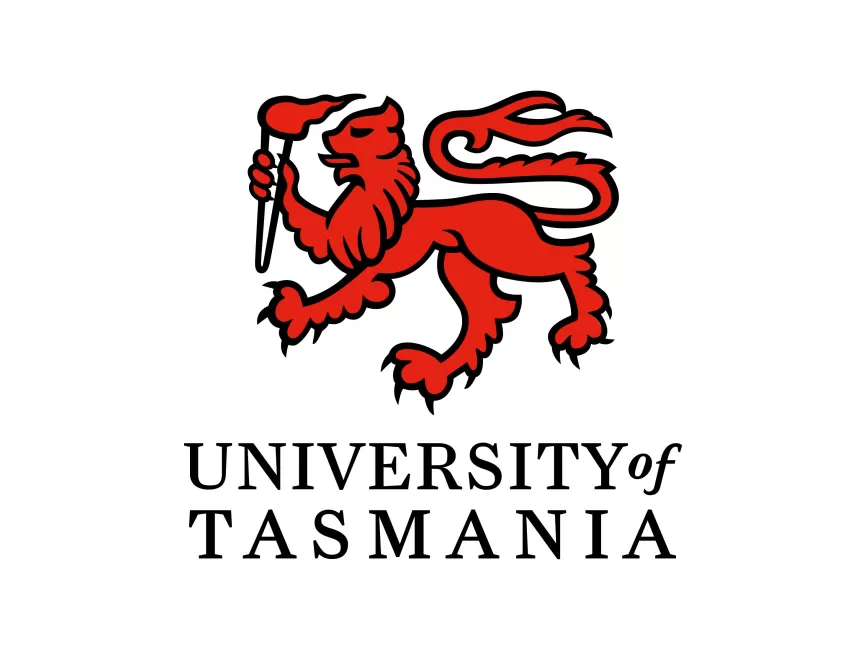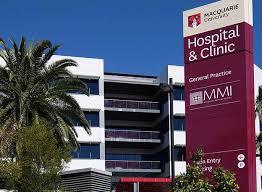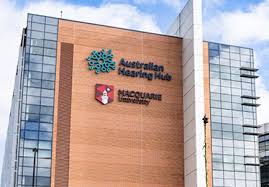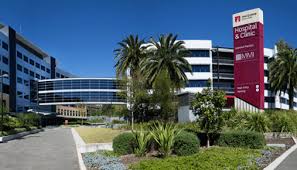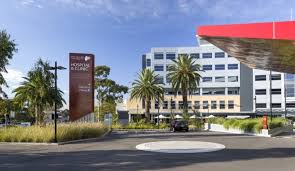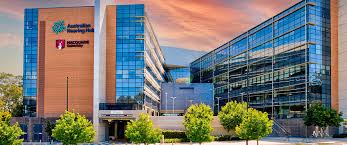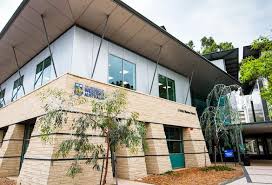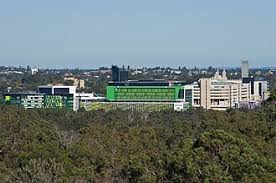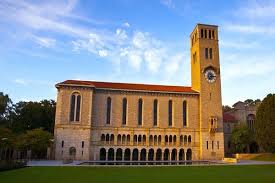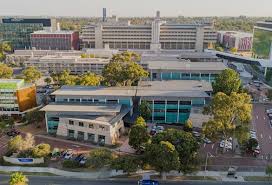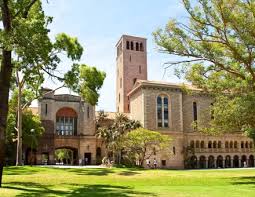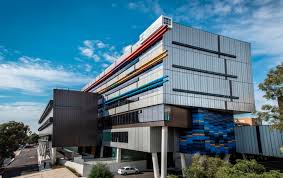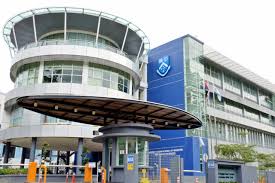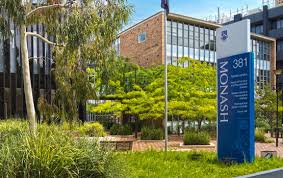University of Tasmania School of Medicine Welcome to the College of Health and Medicine
As Tasmania’s only university, the University of Tasmania enjoys strong connections with the local community, healthcare system, and professionals. These partnerships have helped us build a strong reputation in health education and translational research with local, national, and global impact. Beyond Tasmania, Univerisity have been present in New South Wales since 2006.
About University of Tasmania School of Medicine
The Rozelle campus offers nursing and paramedic education in collaboration with local hospitals, healthcare providers, and Ambulance NSW. Additionally, the campus is home to the Australian Institute of Health Service Management.
UTAS college brings together experts from diverse backgrounds to tackle key challenges in health and medicine.
- Brain Science, Behaviour & Neurodegenerative Disease
- Prevention and Management of Chronic Disease
- Molecular Genetics of Human Disease
University of Tasmania School of Medicine – Table of Contents
- About
- Advantages
- Ranking
- Departments And Course Duration
- Facilities And Infrastructure
- Required Documents
- Eligibility Criteria
- Admission Process
- Benefits
- Privileges And Benefits for Indian Students
- FAQ’s
Association to Advance Collegiate Schools of Business (AACSB)
The Tasmanian School of Business and Economics is accredited by AACSB International, the world’s leading accreditation body for business schools. With only 5% of business schools worldwide achieving this distinction, AACSB accreditation signifies the highest standards of excellence in business education. As the largest global alliance in business education, AACSB connects educators, students, and industry leaders to cultivate future business innovators. Since its establishment in 1916, the organization has been dedicated to fostering engagement, accelerating innovation, and amplifying impact in business education.
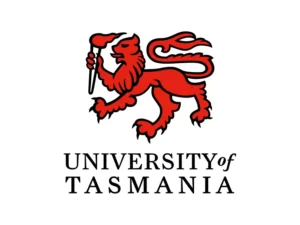
UTAS School of Business and Economics became a Principles for Responsible Management Education (PRME) signatory in 2021. UTAS uphold PRME’s six core principles—Purpose, Values, Method, Research, Partnership, and Dialogue—while integrating sustainability into their teaching and research. UTAS commitment to responsible management education benefits of students, staff, educational partners, and the wider community.
University actively support the United Nations’ Sustainable Development Goals (SDGs). Globally, UTAS university ranks 25th overall across all SDGs and 1st for SDG 13 – Climate Action.
GARP Partnership for Risk Education
The Global Association of Risk Professionals (GARP) is the world’s foremost organization for risk managers. Through the partnership with GARP, Universitye enhance risk management education within the Master of Finance program. This collaboration ensures that the curriculum integrates rigorous academic instruction with real-world industry insights, preparing students for successful careers in global financial risk management.
CFA Institute University Affiliation Program
The Chartered Financial Analyst (CFA) Program sets a global benchmark for financial analysts’ competence and integrity. The finance courses are recognized by the CFA Institute University Affiliation Program, demonstrating their alignment with industry standards in investment management. This affiliation reinforces the relevance of their curriculum and supports students preparing for CFA Program exams, equipping them for rewarding careers in finance.
Advantages of Studying at the University of Tasmania School of Medicine
The University of Tasmania (UTAS) School of Medicine offers a high-quality medical education that combines academic excellence, clinical exposure, and research opportunities.
1. Extensive Clinical Experience
Students at UTAS benefit from hands-on training in real-world medical environments, ensuring they develop the necessary clinical skills and confidence to become competent doctors.
- Professional Experience Placements: Students gain practical exposure by working in hospitals, general practices, and various healthcare agencies.
- Clinical Rotations: Students rotate through different medical settings, including hospitals, outpatient clinics, and rural health centers, to build their clinical decision-making skills and professional responsibility.
- Hands-On Mentoring: Training is provided by experienced medical practitioners, allowing students to learn directly from professionals in the field.
2. Learner-Centered Curriculum
The medical curriculum at UTAS is structured to enhance critical thinking and prepare students for real-life medical challenges.
- Case-Based Learning (CBL): Students engage in active learning through real-life clinical, community, and scientific case studies.
- Integration of Academic and Clinical Experiences: The program blends theoretical medical knowledge with practical patient care, preparing students to address health issues in both individual and societal contexts.
3. Diverse Career Opportunities
Graduates of the UTAS School of Medicine are well-equipped to pursue various medical career paths within Australia and internationally.
- Internship & Registration: Graduates can apply for provisional registration to complete their intern training in an approved hospital.
- Medical Practice in Australia & New Zealand: Upon completing their internship, graduates can apply for general registration as a Medical Practitioner in Australia and New Zealand.
- Specialization Opportunities: Graduates have the option to specialize in various medical fields, including general practice, surgery, internal medicine, pediatrics, anesthesiology, and more.
4. Research Opportunities
UTAS is committed to medical research, focusing on preventive strategies and solutions for chronic health conditions.
- Research Areas: Researchers at UTAS are developing strategies to combat major health risks, including:
- Obesity
- Heart Disease
- Diabetes
- Public Health and Preventive Medicine
Students have opportunities to participate in cutting-edge research, gaining valuable experience in medical innovation and healthcare improvements.
Latest Notifications:
University of Tasmania School of Medicine Ranking
The University of Tasmania (UTAS), established in 1890, is a prestigious public higher education institution in Australia. It is located in the urban setting of Hobart, the capital city of Tasmania, with a population ranging between 50,000 and 249,999 inhabitants. In addition to its main campus in Hobart, the university also has branch campuses in Launceston and Burnie, extending its academic reach across the state.
UTAS is officially recognized by the Department of Education and Training of Australia and is classified as a large-sized institution with a student enrollment ranging between 15,000 and 19,999. As a coeducational university, it offers diverse academic programs leading to internationally recognized degrees, including pre-bachelor’s qualifications (certificates, diplomas, associate degrees, and foundation courses), bachelor’s degrees, master’s degrees, and doctoral degrees across multiple fields of study.
With a rich academic heritage spanning over 134 years, UTAS follows a selective admission policy based on entrance examinations, past academic performance, and grades. However, it maintains an acceptance rate of 90-99%, making it a less selective institution compared to other Australian universities.
The university actively welcomes international students, fostering a diverse and inclusive academic environment. To support students, UTAS offers a wide range of academic and non-academic facilities and services, including:
- A well-equipped library with extensive digital and physical resources.
- On-campus housing to provide comfortable accommodations.
- Modern sports facilities to promote physical well-being.
- Financial aid programs and scholarships to assist students with tuition and living expenses.
- Study abroad and exchange programs, enhancing global learning opportunities.
- Online courses and distance learning programs, catering to remote and part-time learners.
- Comprehensive administrative support services to guide students throughout their academic journey.
Departments And Course Duration in University of Tasmania School of Medicine
The University of Tasmania (UTAS) School of Medicine offers the Bachelor of Medicine and Bachelor of Surgery (MBBS) program, which is a comprehensive medical degree designed to train students to become skilled and compassionate medical practitioners.
Course Duration
The MBBS program at the University of Tasmania typically spans 5 years for school-leavers (students entering directly after high school). For graduate-entry students (those who already hold a bachelor’s degree), the program is condensed into 4 years. The course is divided into three main phases:
- Focuses on foundational medical sciences, clinical skills, and early clinical exposure. This phase integrates problem-based learning (PBL) with practical training.
- Involves immersive clinical placements across various medical disciplines, including rural and remote healthcare settings.
- The final year is an intensive internship-like experience, where students work in hospitals and clinics under supervision, preparing for their transition to medical practice.
Departments
The MBBS program is delivered through a collaboration of several departments and disciplines within the School of Medicine and the broader university.
Anatomy and Physiology: Provides foundational knowledge of the human body and its functions.
- Biochemistry and Molecular Biology: Focuses on the biochemical processes underlying health and disease.
- Pharmacology: Covers the principles of drug action and therapeutics.
- Pathology: Explores the mechanisms of disease and diagnostic techniques.
- Public Health and Preventive Medicine: Emphasizes population health, epidemiology, and health promotion.
- General Practice and Rural Health: Addresses primary care and the unique challenges of rural and remote healthcare.
- Surgery and Anesthesia: Provides training in surgical principles and perioperative care.
- Internal Medicine: Covers the diagnosis and management of medical conditions across various specialties (e.g., cardiology, endocrinology, etc.).
- Psychiatry: Focuses on mental health and behavioral sciences.
- Obstetrics and Gynecology: Deals with women’s health, pregnancy, and childbirth.
- Pediatrics: Specializes in the care of infants, children, and adolescents.
- Emergency Medicine: Prepares students for acute care and emergency situations.
The program also emphasizes interprofessional learning, collaboration with other healthcare disciplines, and a strong focus on rural and Indigenous health, reflecting the University of Tasmania’s commitment to addressing healthcare disparities in underserved communities. Graduates are well-prepared for internships and further specialization in their medical careers.
Latest Updates:
Facilities And Infrastructure in University of Tasmania School of Medicine
College Infrastructure
-
Teaching and Learning Spaces:
-
-
- Modern lecture theaters equipped with advanced audio-visual technology.
- Simulation labs for hands-on clinical training, including high-fidelity manikins and virtual reality tools.
- Dedicated problem-based learning (PBL) rooms for small-group discussions and collaborative learning.
-
-
Libraries:
-
-
- The University of Tasmania Library provides extensive medical and health science resources, including access to online journals, textbooks, and databases.
- Quiet study areas, group study rooms, and 24/7 access during exam periods.
- Specialist librarians to assist with research and academic support.
-
-
Laboratories:
-
-
- Well-equipped anatomy labs with cadavers for dissection and anatomical study.
- Research labs for biochemistry, microbiology, and molecular biology.
- Clinical skills labs for practicing procedures like suturing, IV insertion, and patient examinations.
-
-
Clinical Training Facilities:
-
- Partnerships with major hospitals and healthcare centers across Tasmania, including the Royal Hobart Hospital and Launceston General Hospital, for clinical placements.
- Rural Clinical School campuses in Burnie and Launceston, providing exposure to rural and remote healthcare.
Hostels and Accommodations
-
On-Campus Accommodation:
-
-
- UTAS offers a range of on-campus housing options, including dormitories, shared apartments, and self-contained units.
- Popular residences include Christ College, Jane Franklin Hall, and University Apartments.
- Facilities include common rooms, kitchens, laundry services, and study areas.
-
-
Off-Campus Accommodation:
-
- Assistance is provided to find private rentals or shared housing near campus.
- Affordable options are available in Hobart, Launceston, and Burnie, depending on the student’s study location.
Canteen and Dining
-
On-Campus Dining:
-
-
- Multiple cafeterias and food outlets offering a variety of cuisines, including vegetarian and halal options.
- Popular spots include the Refectory and Medical Science Precinct Café.
-
-
Self-Catering Options:
-
- On-campus accommodations provide shared kitchens for students who prefer to cook their own meals.
Sports and Recreation
-
Sports Facilities:
-
-
- UTAS has well-maintained sports grounds, gyms, and fitness centers.
- Facilities for basketball, soccer, cricket, tennis, and swimming are available.
- Students can join sports clubs and participate in inter-university competitions.
-
-
Outdoor Activities:
-
- Tasmania’s natural environment offers opportunities for hiking, cycling, and water sports.
- The university organizes outdoor excursions and adventure activities.
Extracurricular Activities
-
Student Clubs and Societies:
-
-
- The UTAS Medical Society (MedSoc) organizes social events, academic support, and networking opportunities.
- Other clubs include the Rural Health Club and Global Health Society, focusing on specific interests and career paths.
-
-
Community Engagement:
-
-
- Opportunities to participate in rural health outreach programs and volunteer initiatives.
- Partnerships with Indigenous communities for cultural immersion and health promotion activities.
-
-
Cultural and Arts Activities:
-
- The university hosts art exhibitions, music performances, and cultural festivals.
- Students can join drama, music, and dance groups.
Technology and Innovation
-
Simulation and Virtual Learning:
-
-
- Advanced simulation centers for realistic clinical training.
- Access to online learning platforms, virtual patient cases, and interactive modules.
-
-
Research Facilities:
-
- Cutting-edge labs for medical research, including genomics, neuroscience, and public health.
- Collaboration with the Menzies Institute for Medical Research, a leading research center in Tasmania.
Student Support Services
-
Academic Support:
-
-
- Tutoring, workshops, and mentoring programs for medical students.
- Career counseling and guidance for internships and specialization.
-
-
Health and Wellbeing:
-
-
- On-campus health services, including medical and psychological support.
- Wellness programs, such as yoga and mindfulness sessions.
-
-
International Student Support:
-
- Dedicated services for international students, including visa assistance and cultural integration programs.
The University of Tasmania School of Medicine provides a holistic learning environment with world-class facilities, ensuring students have the resources and support they need to excel in their medical education and training. The combination of academic excellence, modern infrastructure, and a vibrant student life makes it a top choice for aspiring medical professionals.
Official site For University of Tasmania School of Medicine: Click Here
Required Documents For Admission in University of Tasmania School of Medicine
- Copy of 10th Certificate & mark sheets
- Copy of 12th Certificate & mark sheets
- Copy of Bachelor degree certificate (If applicable)
- Leaving Certificate
- Birth Certificate
- UCAT scorecard
- Personal statement
- Bank Statement
- Copy of passports
- Passport-size photographs
Eligibility Criteria For University of Tasmania School of Medicine
The University of Tasmania’s School of Medicine offers the Bachelor of Medical Science and Doctor of Medicine (BMedScMD) program, a five-year course designed to prepare students for medical practice. Admission is highly competitive, and meeting the minimum entry requirements does not guarantee a place. Below are the key eligibility criteria:
Age Requirement:
- Applicants must be at least 17 years old by February 1 of the year they commence the course.
Academic Qualifications:
- Recent Secondary Education: Applicants should have completed their secondary education within the last five years.
- Australian Tertiary Admission Rank (ATAR): A minimum ATAR of 95 is required.
- Prerequisite Subjects: Successful completion of Year 12 English and Chemistry within the last five years is mandatory. Applicants lacking the Chemistry prerequisite may need to complete a university foundation unit in Chemistry before starting the program.
Clinical Aptitude Test:
- All applicants must provide a valid UCAT ANZ score. While no specific threshold is mentioned, the UCAT score may be used as a tie-breaker among applicants with similar academic standings.
English Language Proficiency:
- For applicants whose first language is not English, evidence of English proficiency is required. Acceptable tests and scores include:
- IELTS (Academic): Overall score of 7.0, with no band less than 7.0.
- TOEFL (iBT): Total score of 100, with minimum scores of Reading 25, Listening 25, Speaking 23, and Writing 27.
- PTE Academic: Overall score of 65, with no section below 65.
- Alternative Evidence: Successful completion of at least 24 months of full-time study within the last 48 months at institutions in specified English-speaking countries may also be accepted.
Admission Process For University of Tasmania School of Medicine
-
Check Eligibility:
-
-
- Ensure you meet the academic and English language requirements.
- For school-leavers: High school qualifications (e.g., ATAR, IB, or equivalent).
- For graduate-entry: A completed bachelor’s degree.
-
-
Submit Application:
-
-
- Apply online through the University of Tasmania’s official website.
- Fill in personal, academic, and document details.
- Upload scanned copies of required documents (transcripts, certificates, mark sheets, etc.).
-
-
Shortlisting:
-
-
- The university reviews applications and shortlists candidates based on academic scores and submitted documents.
- Shortlisted candidates are invited for an interview (e.g., MMI – Multiple Mini Interviews).
-
-
Interview (MMI):
-
-
- Attend the MMI, which lasts about 2 hours.
- Assessment areas include logical reasoning, problem-solving, interpersonal skills, empathy, and ethical judgment.
-
-
Receive Offer Letter:
-
-
- Successful candidates receive an offer letter via email.
- Acknowledge and accept the offer within the specified deadline.
-
-
Visa Application:
-
-
- Apply for a student visa after receiving the offer letter.
- Ensure all visa requirements are met.
-
-
Enroll and Start:
-
- Complete enrollment formalities.
- Begin your MBBS program at the University of Tasmania.
Get More Details About The Colleges in Australia: Click Here
Benefits of Studying in University of Tasmania School of Medicine
Studying at the University of Tasmania (UTAS) School of Medicine offers numerous benefits, making it an excellent choice for aspiring medical professionals.
1. High-Quality Education
- Accredited Program: The MBBS program is accredited by the Australian Medical Council (AMC), ensuring global recognition.
- Innovative Curriculum: Focus on problem-based learning (PBL), early clinical exposure, and hands-on training.
- Experienced Faculty: Learn from highly qualified academics and practicing medical professionals.
2. Focus on Rural and Remote Health
- Rural Health Emphasis: Unique focus on rural and remote healthcare, addressing critical shortages in these areas.
- Rural Clinical School: Opportunities to train in rural and regional settings, gaining diverse clinical experiences.
- Community Engagement: Work with underserved populations, including Indigenous communities.
3. State-of-the-Art Facilities
- Simulation Labs: Access to advanced simulation centers for realistic clinical training.
- Modern Libraries: Extensive medical resources, including online journals, textbooks, and research databases.
- Research Labs: Cutting-edge facilities for medical research in areas like neuroscience, public health, and chronic diseases.
4. Clinical Exposure and Placements
- Hospital Partnerships: Strong ties with major hospitals like the Royal Hobart Hospital and Launceston General Hospital.
- Diverse Placements: Clinical rotations across urban, rural, and remote settings.
- Hands-On Experience: Early and extensive patient interaction, preparing students for real-world medical practice.
5. Research Opportunities
- Menzies Institute for Medical Research: Collaborate with one of Australia’s leading health research institutes.
- Research Projects: Opportunities to participate in groundbreaking research in areas like population health, genetics, and infectious diseases.
- Publication and Networking: Chance to present research at conferences and publish in reputed journals.
6. Supportive Learning Environment
- Small Class Sizes: Personalized attention and mentorship from faculty.
- Student Support Services: Academic tutoring, career counseling, and mental health support.
- Interprofessional Learning: Collaborate with students from other health disciplines, fostering teamwork skills.
7. Affordable Living and Scholarships
- Lower Cost of Living: Tasmania offers a more affordable lifestyle compared to other Australian cities.
- Scholarships: Financial aid and scholarships for domestic and international students.
- Part-Time Work Opportunities: Flexible work options to support studies and gain experience.
8. Vibrant Student Life
- Clubs and Societies: Join the UTAS Medical Society (MedSoc), Rural Health Club, and other student organizations.
- Sports and Recreation: Access to gyms, sports facilities, and outdoor activities like hiking and cycling.
- Cultural Activities: Participate in art exhibitions, music performances, and cultural festivals.
9. Career Prospects
- Internship Pathways: Graduates are well-prepared for internships and residency programs in Australia and globally.
- Global Recognition: UTAS medical degrees are recognized worldwide, opening doors to international career opportunities.
- Alumni Network: Connect with a strong network of alumni working in diverse medical fields.
10. Beautiful Location
- Tasmania’s Natural Beauty: Study in a serene environment with stunning landscapes, clean air, and a relaxed lifestyle.
- Safe and Welcoming Community: Tasmania is known for its friendly and inclusive community.
The University of Tasmania School of Medicine offers a unique blend of high-quality education, practical training, research opportunities, and a supportive environment. Its focus on rural health, state-of-the-art facilities, and affordable living make it an ideal choice for students pursuing a career in medicine. Whether you aim to work in urban hospitals or rural communities, UTAS equips you with the skills and experience to excel in the medical field.
Privileges And Benefits for Indian Students in University of Tasmania School of Medicine
The University of Tasmania (UTAS) School of Medicine offers various benefits and opportunities for Indian students, including scholarships, support services, and a globally recognized education.
1. Scholarships for Indian Students
- Tasmanian International Scholarship (TIS): This merit-based scholarship offers a 25% reduction in tuition fees for eligible Indian students.
- Australia Awards Scholarships: Funded by the Australian government, these scholarships are available for Indian students pursuing undergraduate or postgraduate studies.
- College of Health and Medicine Scholarships: Specific scholarships for students enrolling in health and medicine programs, including medicine, nursing, and allied health.
2. Globally Recognized Degree
- The University of Tasmania is ranked among the top universities globally, and its medical degree is recognized by the Medical Council of India (MCI). Graduates can practice in India after clearing the Foreign Medical Graduates Examination (FMGE).
3. Clinical Placements and Practical Training
- UTAS School of Medicine provides extensive clinical placements in Tasmania and other Australian states, giving students hands-on experience in diverse healthcare settings.
- Indian students gain exposure to advanced medical practices and technologies.
4. Pathway Programs
- UTAS offers pathway programs for students who may not meet direct entry requirements. These include foundation programs and diplomas that lead to undergraduate medicine degrees.
5. Support Services for International Students
- Orientation Programs: Helps Indian students adjust to life in Tasmania.
- Academic Support: Includes workshops, tutoring, and English language assistance.
- Career Services: Assistance with internships, job placements, and career planning.
- Health and Wellbeing Services: Access to counseling, health services, and wellness programs.
6. Post-Study Work Opportunities
- Graduates of the UTAS School of Medicine may be eligible for the Temporary Graduate Visa (subclass 485), allowing them to work in Australia for up to 4 years after graduation.
- This provides valuable international work experience and opportunities to explore permanent residency pathways.
7. Affordable Living Costs
- Tasmania is known for its lower cost of living compared to other Australian cities, making it an attractive destination for Indian students.
8. Cultural Diversity and Community
- UTAS has a vibrant international student community, including a significant number of Indian students. Cultural clubs and events help students stay connected to their roots while embracing Australian culture.
9. Research Opportunities
- The School of Medicine is involved in cutting-edge research, and Indian students can participate in research projects, contributing to global medical advancements.
10. Recognition by Indian Authorities
- The University of Tasmania is listed in the World Directory of Medical Schools (WDOMS), and its MBBS program is recognized by the Medical Council of India (MCI), enabling graduates to practice in India after clearing the FMGE.
Application Requirements for Indian Students:
- Academic transcripts (Class 12 for undergraduate programs; bachelor’s degree for postgraduate programs).
- English language proficiency (IELTS, TOEFL, or PTE scores).
- UCAT (University Clinical Aptitude Test) or ISAT (International Student Admissions Test) for medicine programs.
- Statement of purpose and letters of recommendation.
FAQ’s
Is the UTAS School of Medicine recognized in India?
Yes, the University of Tasmania is listed in the World Directory of Medical Schools (WDOMS), and its MBBS program is recognized by the Medical Council of India (MCI). Indian graduates must pass the Foreign Medical Graduates Examination (FMGE) to practice in India.
Does UTAS provide clinical placements?
Yes, UTAS School of Medicine offers extensive clinical placements in hospitals and healthcare facilities across Tasmania and other Australian states. This provides students with hands-on experience in real-world medical settings.
What are the career prospects after graduation?
- Graduates can:
- Practice medicine in Australia after completing internships and obtaining registration.
- Return to India and practice after clearing the FMGE.
- Pursue further specialization or research in medical fields.
What is the student life like at UTAS?
UTAS has a vibrant and diverse student community with numerous clubs, societies, and cultural events. Tasmania offers a safe and welcoming environment with access to natural beauty and outdoor activities.
Are there pathway programs for students who don’t meet direct entry requirements?
Yes, UTAS offers foundation programs and diploma courses that can help students meet the entry requirements for the MBBS program.
Also Check:
